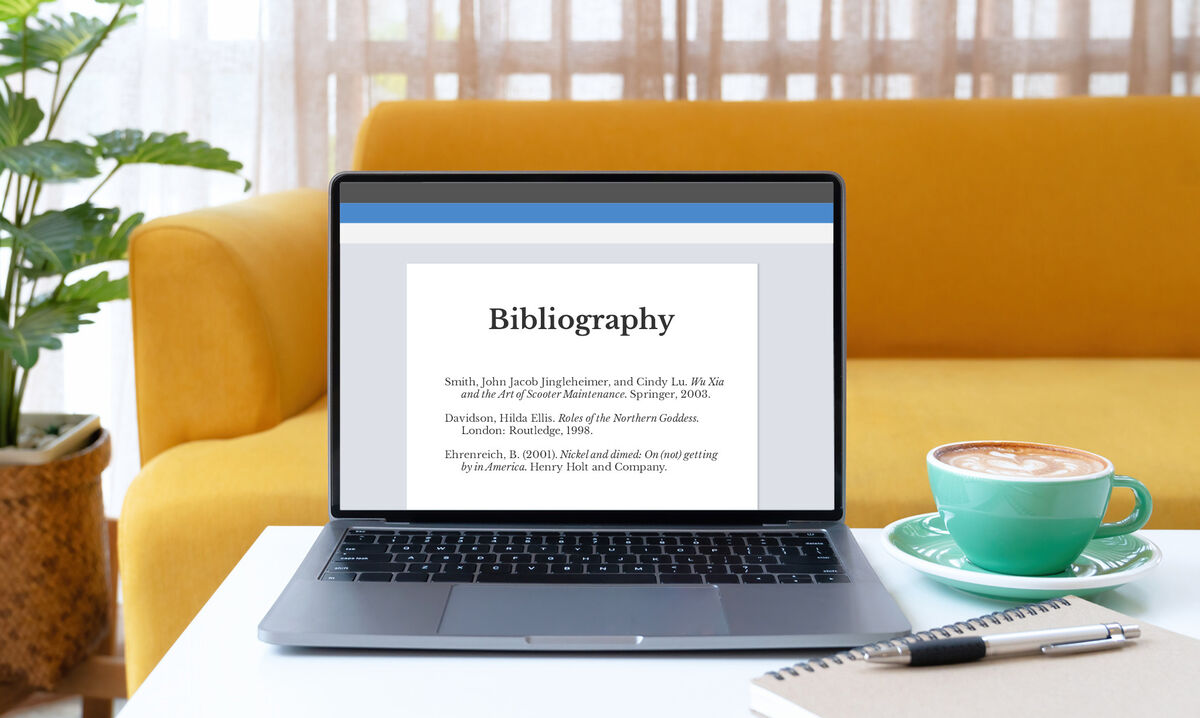
A bibliography is a list of sources that were referenced to write an academic paper, a journal article, a book, a critique, an essay, or any other type of academic writing. Bibliographies differ in format and go by different names depending on what style of writing you are using, but they mostly include the same standard information. We’ll cover the basics to help you get started.
Bibliography Styles: Bibliography vs. Works Cited vs. Reference List
Each style guide has a different format for writing a bibliography. Make sure that the bibliography style you use matches the format of your paper.
bibliography - list of all sources consulted to write the paper, even those not cited or used directly (Chicago notes-bibliography style)
works cited - list of all sources actually cited within your paper (MLA style)
reference list/page - same as works cited; list of all sources actually cited within your paper (Chicago author-date style, APA style)
How to Write a Bibliography in MLA Format
The MLA (Modern Language Association) format is primarily used for English Literature and other disciplines of the humanities. This style typically uses a Works Cited page.
As you write your paper, keep track of all the studies, books, films, internet articles, and other sources you consulted while writing the paper. You’ll need to note:
author
title
place of publication
publisher
date of publication
page numbers
When you include these sources in your works cited, they should be in alphabetical order.
Nine Core Elements
MLA revised its eighth edition, which created a container system using nine core elements. These nine core elements may be nested in containers. As works may be published in edited forms on different platforms, the container system lets you include all the necessary information to lead your reader to the exact source you used for your paper.
For each source, try to find as much information as possible about it. Follow these nine core elements in order, using the exact punctuation as shown (if you don’t have the information for one element, simply skip it):
Author.
Title of source.
Title of container,
Other contributors,
Version,
Number,
Publisher,
Publication date,
Location.
Include the words “Works Cited” at the top of the page. Use a hanging indent for each entry. This helps separate the entries to make it easier for the reader.
How to Write a Bibliography in Chicago Style
The Chicago style format is primarily used for history texts. You may hear Chicago style called Turabian style. Turabian is simply the shorter student version of Chicago. There are two reference page styles for Chicago.
Author-Date Style Bibliography
The first is a simpler author-date style bibliography. This means the first element is the author’s name, and the second is the date of publication. You use the word “References” at the top of the page. Other elements follow as shown in this basic book format:
Author’s Last Name, Author’s First Name. Year of Publication. Title of Book: Subtitle of Book. Place of Publication: Publisher’s Name.
The parenthetical citation follows this format:
(Smith 2010, 77)
Notes-Bibliography
Chicago’s notes-bibliography style means that either footnotes or endnotes are included throughout the text. The full source entry is then included in a bibliography at the end of the paper.
This example of a note entry shows how to format the note:
##. Author’s First and Last Names, Title of Book: Subtitle of Book (Place of Publication: Publisher’s Name, Date of Publication), pp.
The corresponding bibliography entry is formatted this way:
Author’s Last Name, Author’s First Name. Title of Book: Subtitle of Book. Place of Publication: Publisher’s Name, Date of Publication.
Each source follows the same basic format, but there’ll be differences depending on whether it’s a book, journal article or website. Use the word “Bibliography” at the top of the page.
How to Write a Bibliography in APA Style
The American Psychological Association (APA) style of writing is used for psychology and other sciences and social sciences. This style uses a references list.
For APA style, the format is similar to Chicago’s author-date style and uses the word “References” at the top of the page. The year follows the name of the author. However, place the year in parenthesis after the author. Then include the name of the book or article, the name of the magazine or journal (this does not apply if it’s a book), and the page numbers.
The basic APA reference list format follows this example:
Author, A.A. (2001). Title of work. Location: Publisher.
The in-text citation includes the author’s last name, year of publication and page number within parentheses.
(Author, year, p.#)
Different Styles, Different Formats
Always consult a handbook for any of these styles if you have any questions that weren't answered in this broad overview: Make sure you're using the most current edition. If you need help finding sources or other style tips for your paper, check out these great resources: